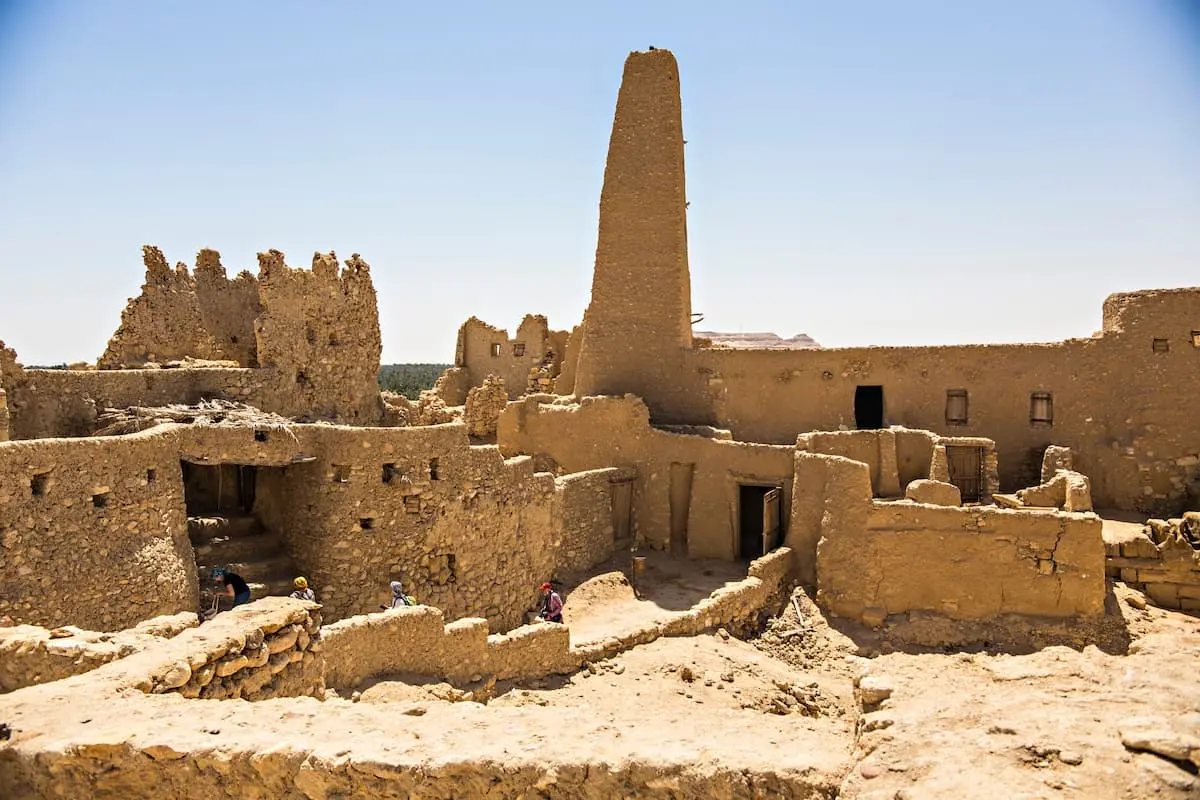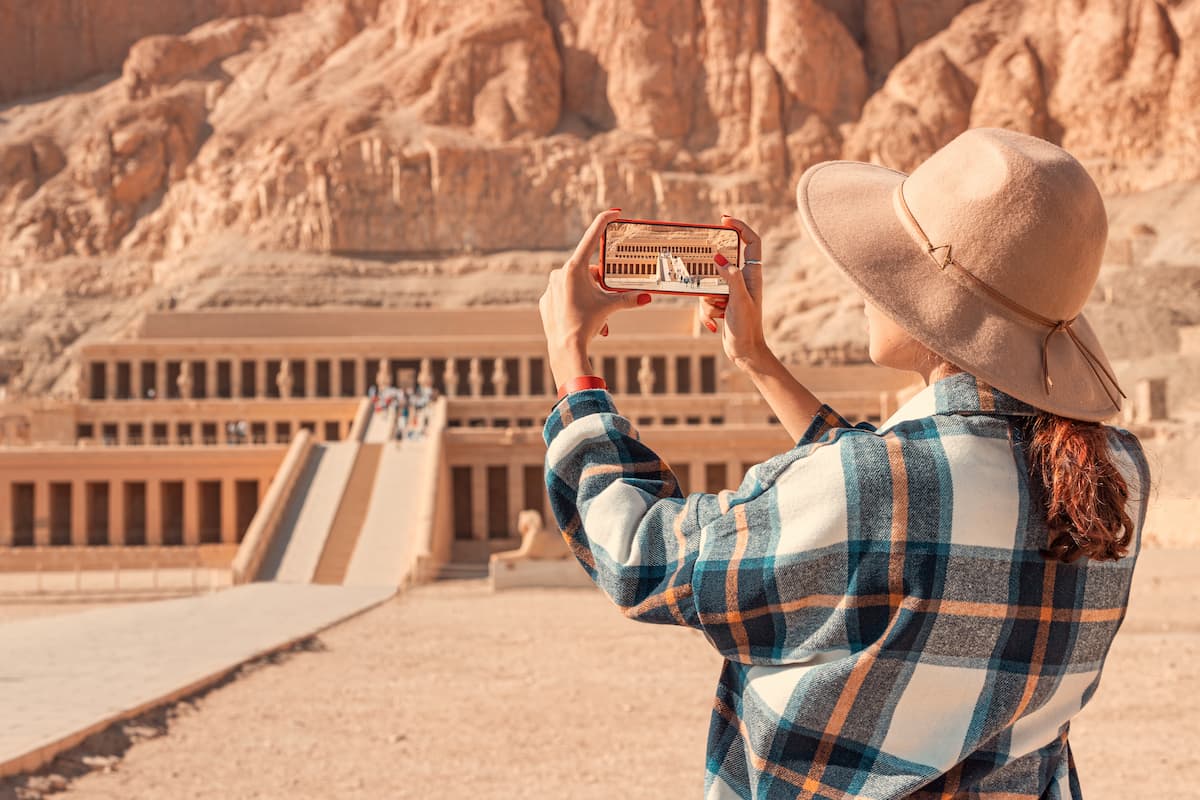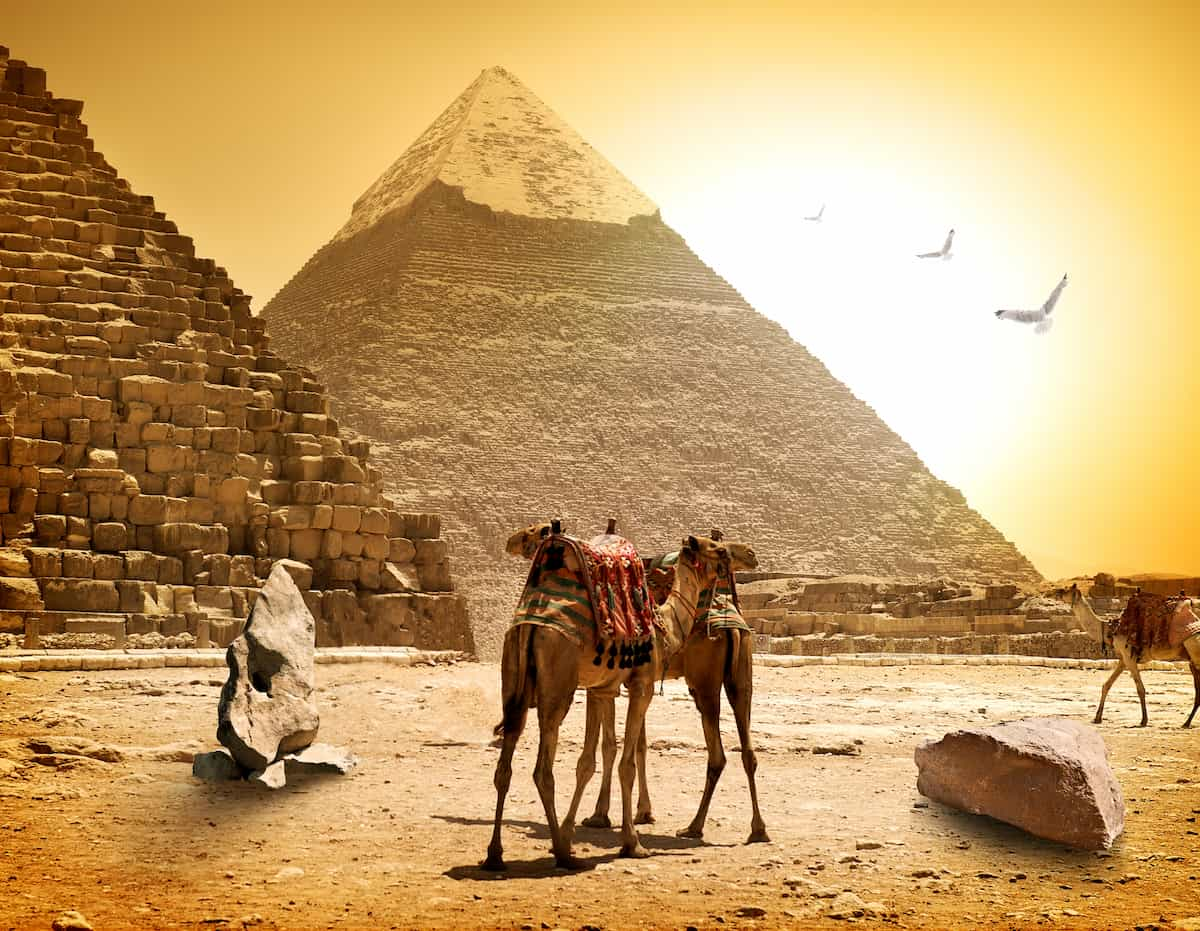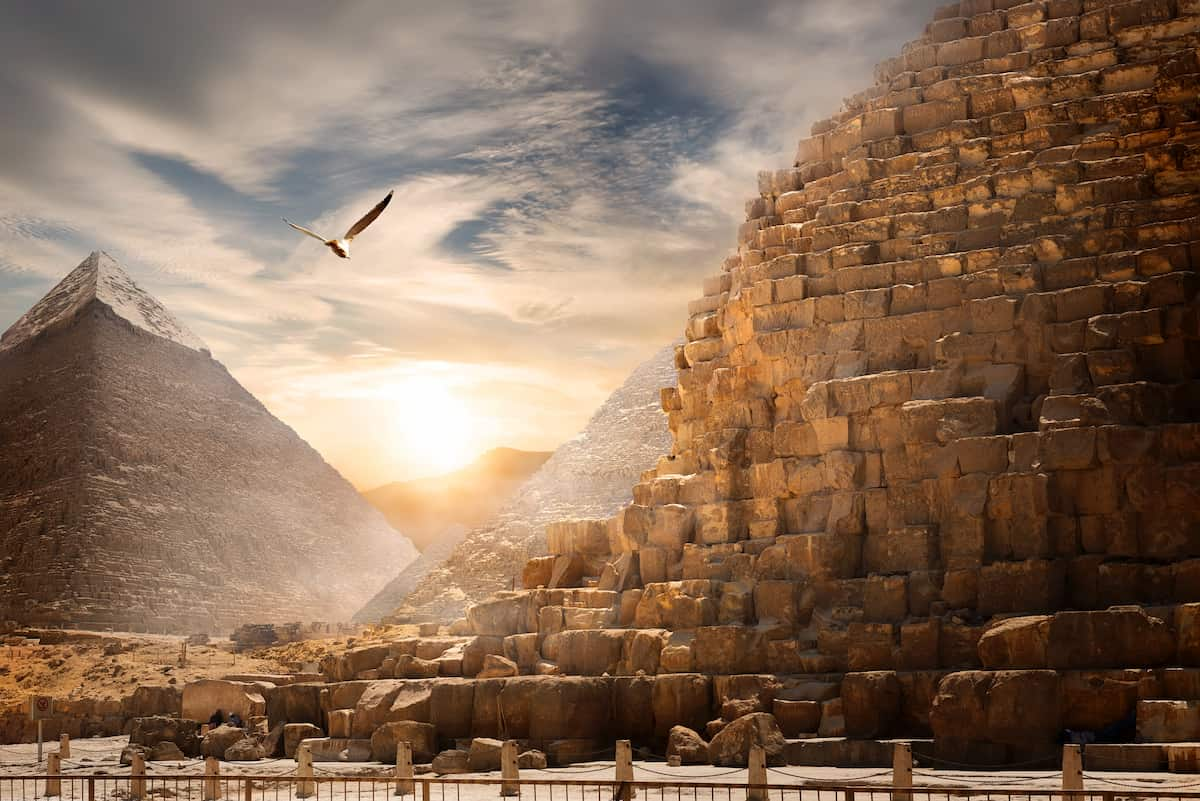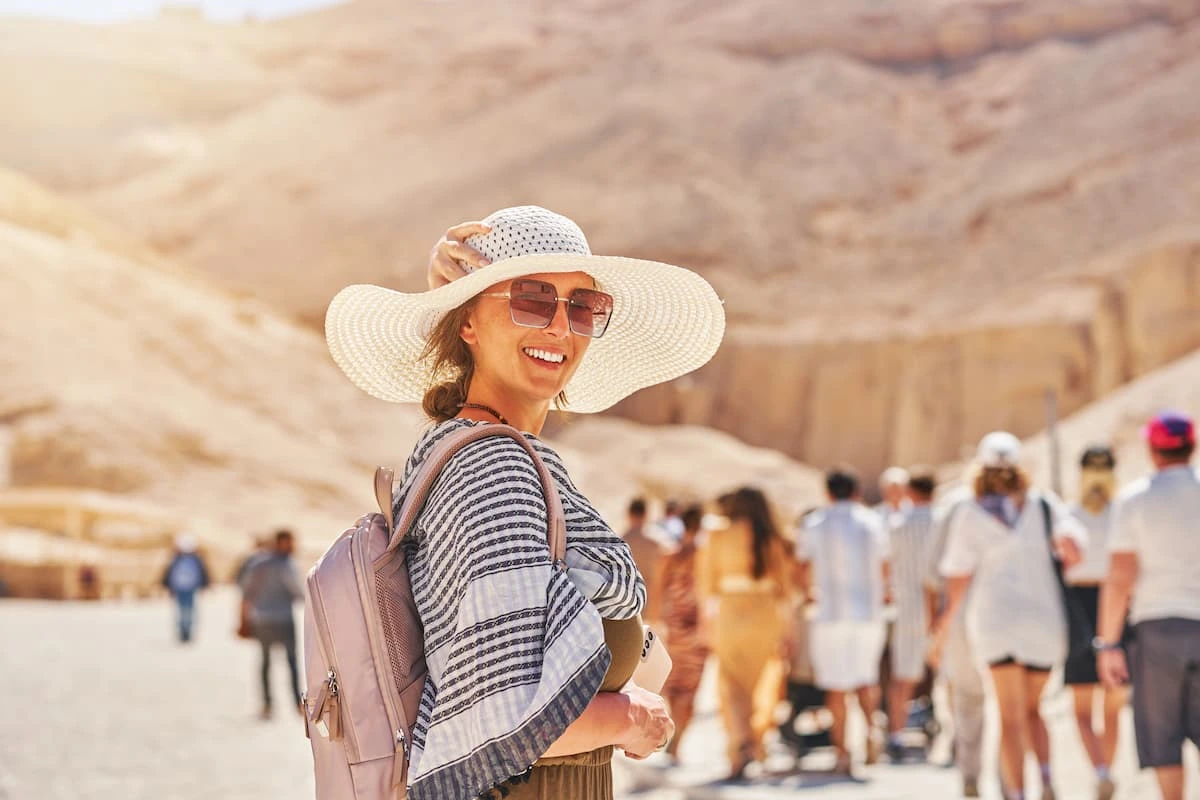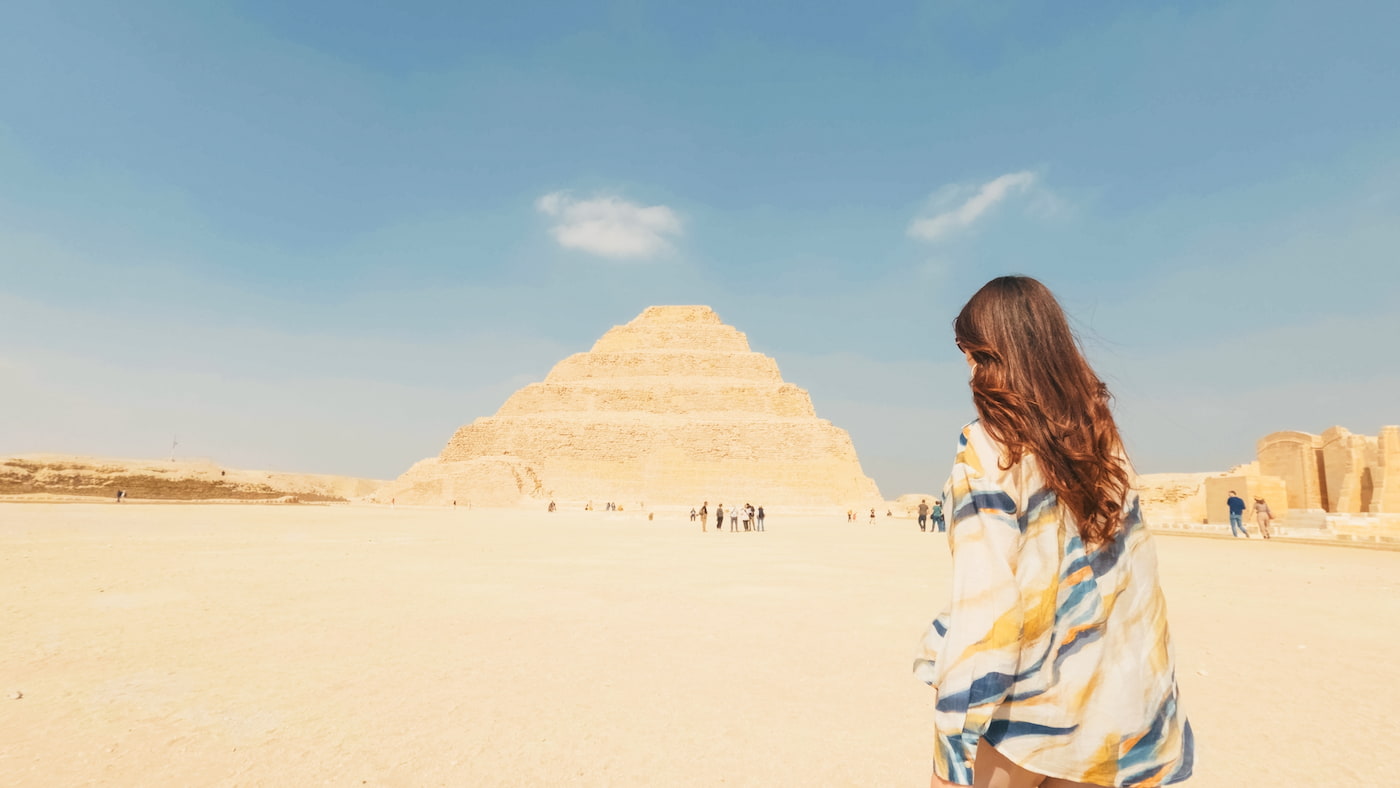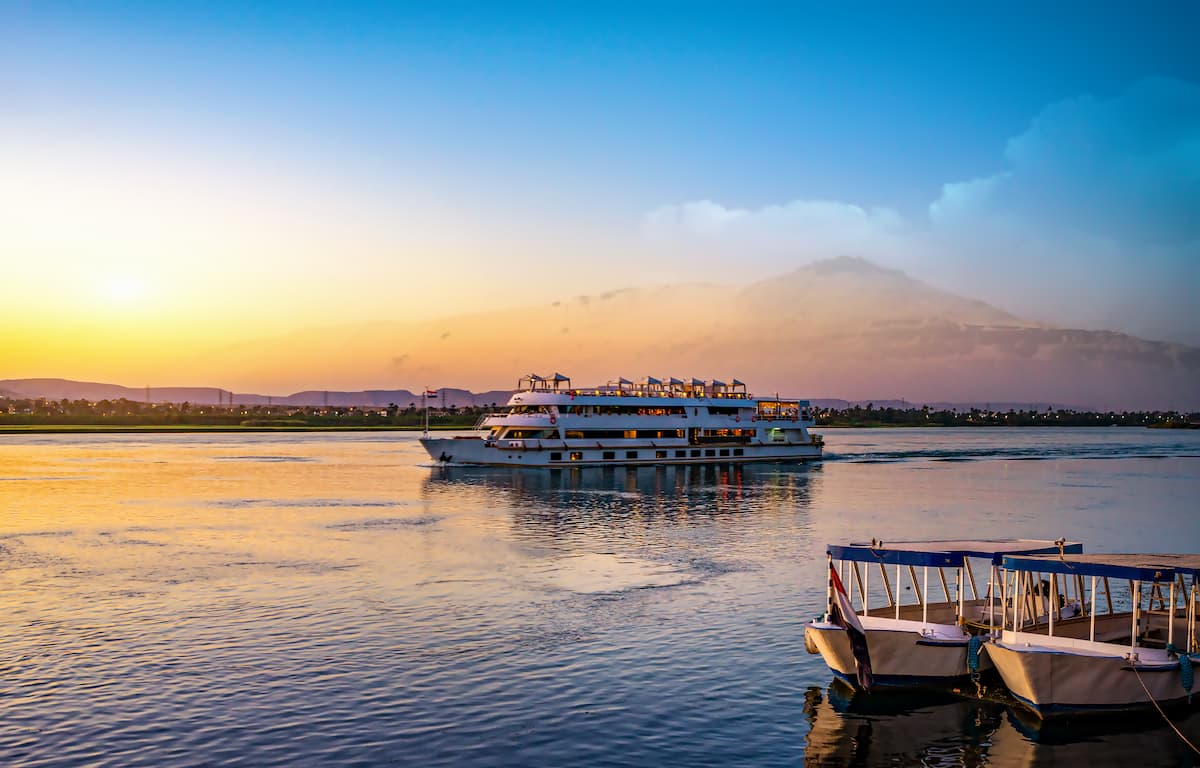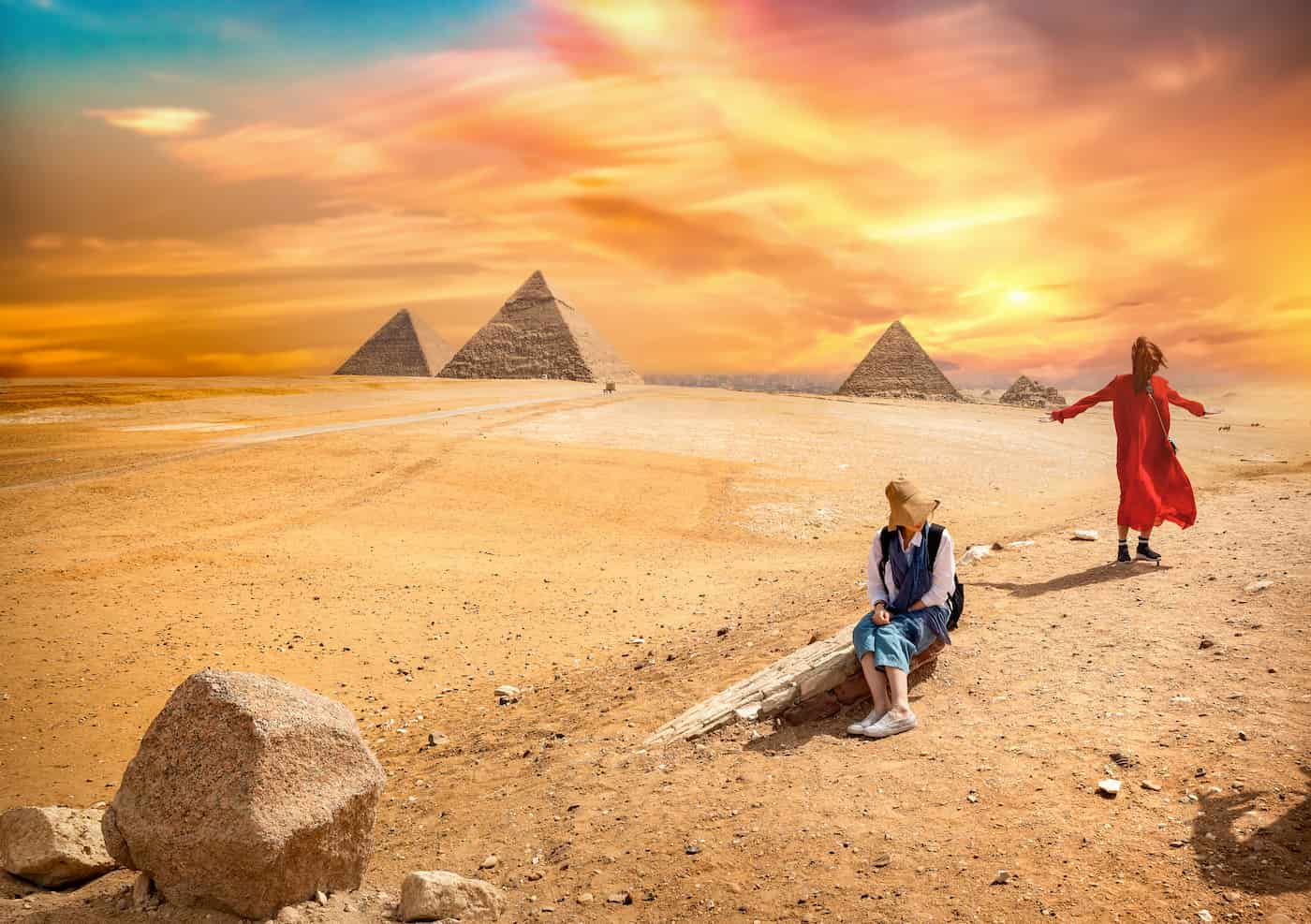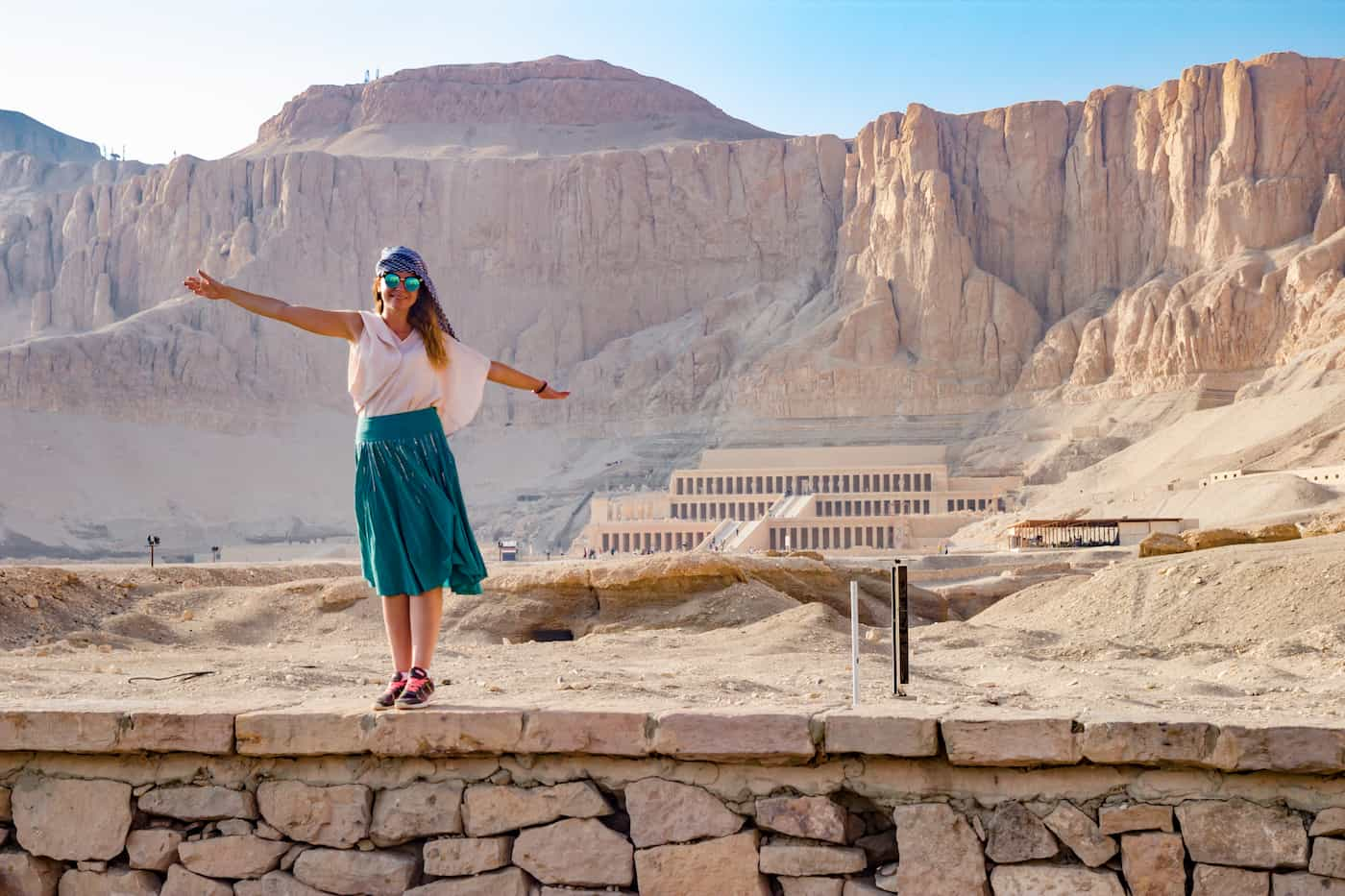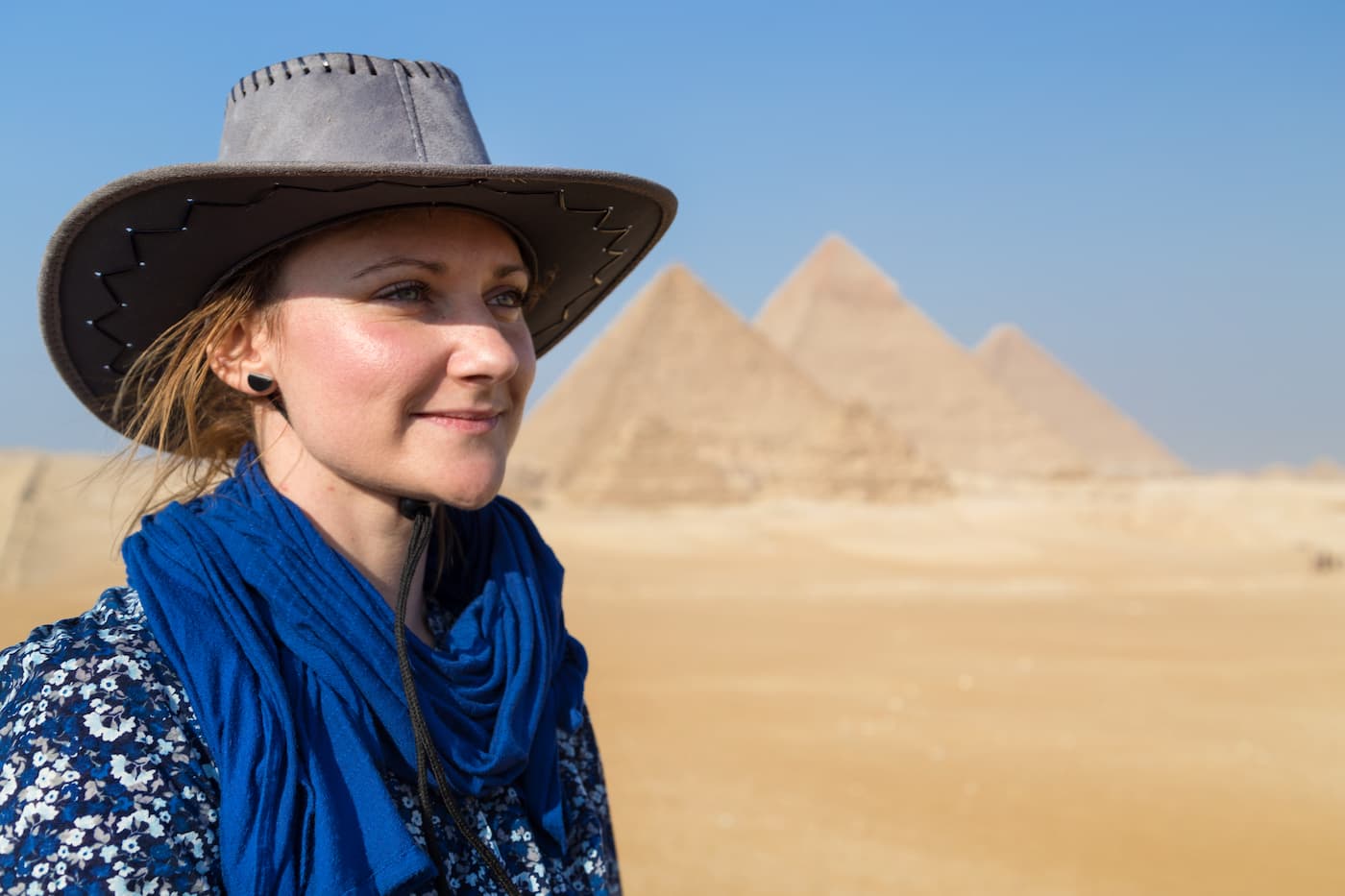Temple of Amun at Siwa Oasis: The Legendary Oracle of Alexander the Great
The very French name granting it for the Temple of Amun at Siwa Oasis (Le Temple de l’Oracle) describes one of the strangest and sacred places in Egypt. Nestled in the deep recesses of the Western Desert, this ancient attraction of the highest fame rose to prominence in 331 BC, when Alexander the Great came to consult the Oracle of Amun. There, the priests allegedly declared him to be the son of Zeus-Amun and thus blessed his right to rule Egypt.
Unlike the large-scale Karnak or Luxor, the Temple of Amun at Siwa overlooks its oasis in a less grand manner from atop a huge rock near Aghurmi village. The wanderer may pass through the ancient sites where history blends with parables and spirituality.
Visiting this temple today does not mean walking around an ancient ruin; it involves a conscious awareness of some of those very mystical energies that attracted pharaohs and conquerors throughout history. For anyone planning a trip to Egypt, the Amun Temple in Siwa combines beautiful desert, rich culture, and endless enigma.
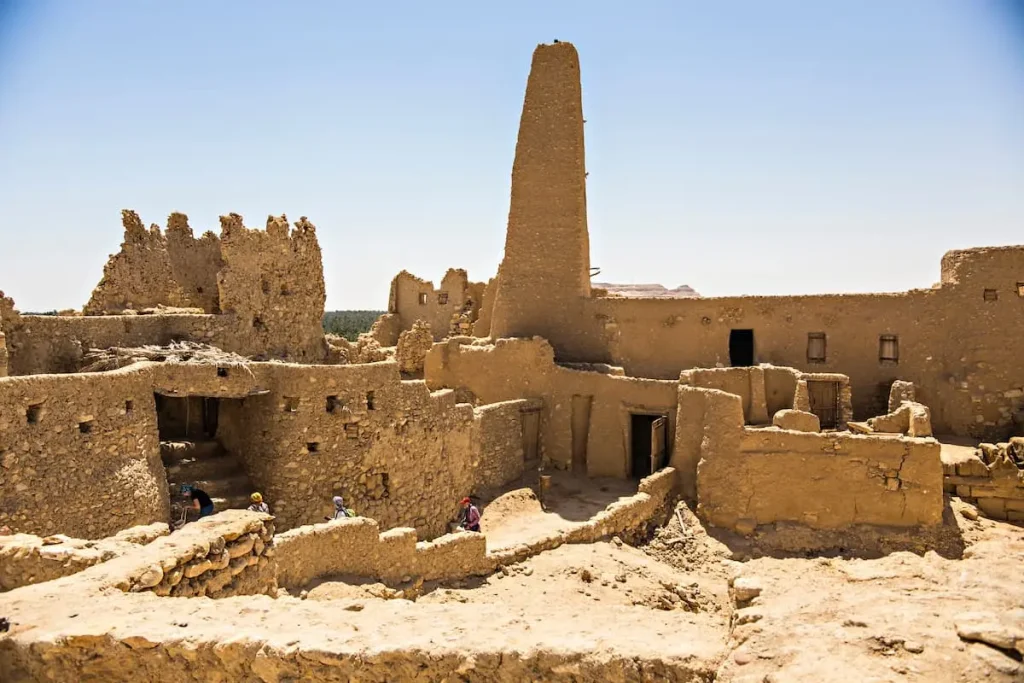
1. The Location of the Temple of Amun
At the very heart of Siwa Oasis sits the Temple of Amun, located in what could arguably be counted as Egypt’s remotest and chic destination. Some 750 kilometers west of Cairo and 50 kilometers east of the Libyan border, Siwa lies deep down in the Western Desert, surrounded by golden dunes plus salt lakes, and pleasant palm groves. The temple perches atop a rocky hill in Aghurmi village, overlooking the vast expanse of the oasis.
Therefore, in ancient times, the temple was granted importance because of its advantageous location. Being an isolated yet spiritually charged native site, the Amun temple became one of pilgrimage with travelers, traders, and rulers coming to it for an oracle’s kind of counsel. The whispering winds from the arid lands stirred ennobling thoughts and helped the temple into something rather divine, an escape from the noise of the Nile Valley.
Another exciting thing about the temple nowadays is that to reach it, you must trek through the desert, an activity worthy of keeping its allure intact. Here, walking visitors are carried through an exquisite piece of history, complemented by the serenity of Siwa, which provides yet another charm to the temple location.
🌴 Things to Do in Siwa Oasis
Discover the magic of Egypt’s most enchanting desert escape with our guide to the
top things to do in Siwa Oasis. From exploring the Temple of Amun and
the Oracle of Alexander the Great to swimming in Cleopatra’s Spring and venturing into
the Great Sand Sea, Siwa offers a unique mix of history, culture, and adventure.
Perfect for travelers seeking both relaxation and exploration.
2. Temple of Amun Architecture
A high style of architecture was carved for the Temple of Amun at Siwa, also called the Temple of the Oracle, accommodating all the Egyptian religious traditions and expressing the peculiarities of the Western Desert environment. Construction began under the reign of Pharaoh Amasis II of the 26th Dynasty in the 6th century BCE. The temple was chiefly built of local varieties of limestone and sandstone blocks cemented together with a mortar of mud, unlike the great temples carved out of hard granite along the Nile.
Entering into the realm of classical Egyptian worship, it was of the form: an entrance pylon, an open courtyard, and an inner sanctuary where both a statue of Amun and a chamber for the oracle presumably existed. Within the sanctuary lay what was thought to be the spiritual heart of the temple: its long, narrow corridors and high chambers would fill the soul with awe and the heavy presence of divinity. From concealed doorways, the priests would summon the voice of the oracle and project it forth to the people ascending secret platforms, heightening the aura of sanctity.
Partial destruction from an explosion in 1896 and the slow wear of centuries stand beside it as eyewitnesses to antiquity, with traces of hieroglyphic inscriptions, relief carvings, and the remains of column bases. Raised above the rocky hill of Aghurmi, it also looked down with domination over the whole oasis, thus emphasizing again its double nature as religious temple-fortress. Therein lies the peculiar conjunction-the Temple of Amun interesting example of ancient desert architecture.
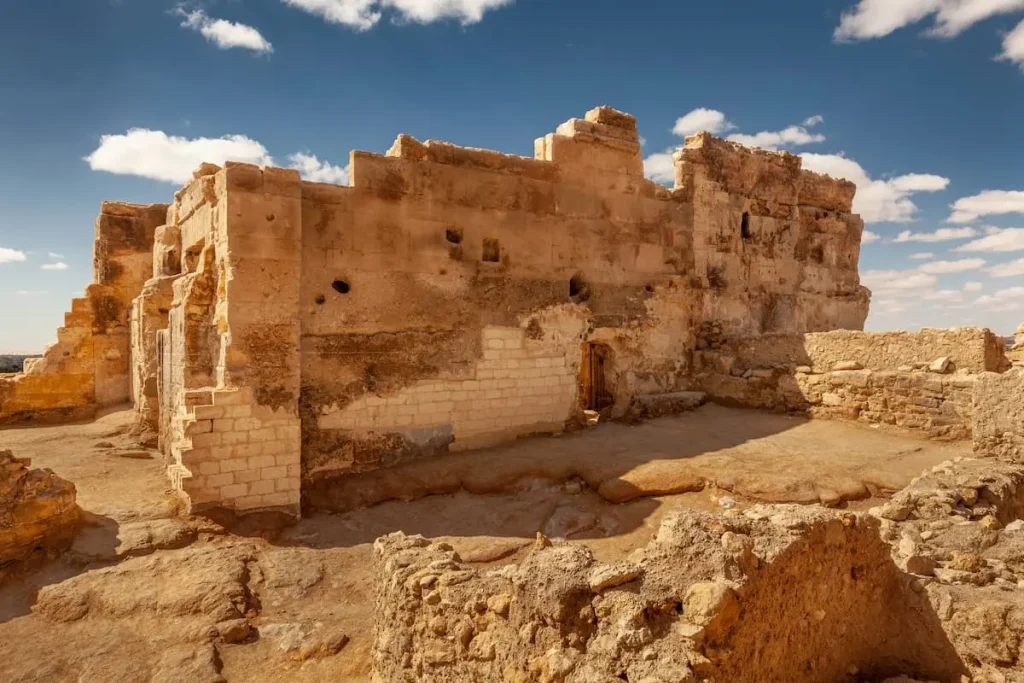
3. Who Built The Temple of Amun
Amazingly, at the center of Siwan territory lies the Temple of Amun, also commonly termed the Oracle Temple. It was built by Pharaoh Amasis II during 570–526 BCE. Amasis, an eminent Late Period pharaoh, felt that in his reinforcement of Egypt’s western border, he needed to establish or strengthen the worship of Amun, who was considered one of the most powerful Egyptian gods.
In the middle of the 6th century BCE, it was erected both for religious and political ends. Egypt was pressured by foreign powers, primarily the Persians, at that time. Maintaining Egypt’s spiritual authority and influence over trade routes across the desert was carried out through establishing a major cult center at Siwa-Way beyond the Western Desert.
Local artisans and priests of Amun supervised construction. Limestone and sandstone were quarried from nearby hills in the desert. The temple was designed for oracles to interpret the will of Amun through rituals.
The Temple became a household name worldwide when Alexander the Great visited the Oracle in 331 BCE to get his legitimacy as the son of Amun sanctioned. This visit immortalized the temple and gave the temple’s builders an entry into history by association with one of the greatest conquerors in history.
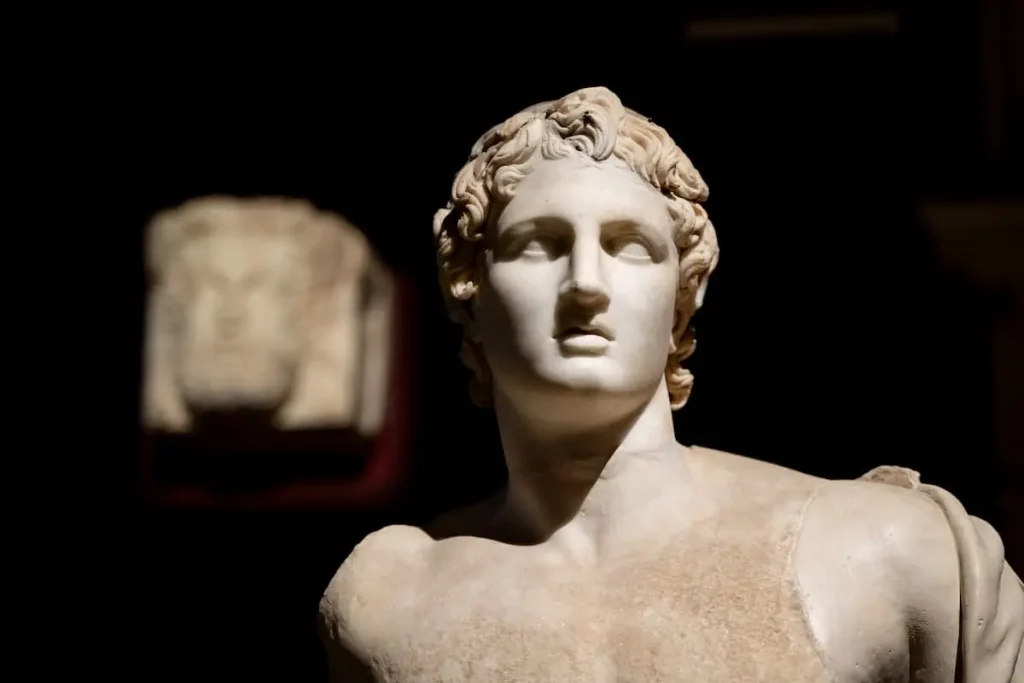
4. Temple of Amun History
One takes the glue of myth, religion, and power into one story to narrate that of the Temple of Amun at the Siwa Oasis, also known as the Temple of the Oracle. Building this temple was the work of Pharaoh Amasis II in the 6th century BCE, and immediately it began to compete with other oracular centers of Egypt in fame. Whereas priests of the temple claimed to have direct communication with Amun, the king of gods, whose will was considered supreme, they internally sanctioned and negated both local governments and international politics through divine guidance.
The oracle became a spiritual center for desert tribes and Egyptian officials alike at that time. However, it gained international fame in 331 BCE when Alexander the Great marched across the Western Desert to consult the Oracle by which prophecy he was declared “Son of Amun,” therefore legitimizing his rule over Egypt, with his worshippers conferring the divine status of Amun on him.
The temple managed to maintain its fame during the Ptolemaic and Roman periods as a sanctuary, but its very significance declined with the rise of Christianity in Egypt. Additionally, by the late Middle Ages, the temple was already in partial abandonment, with the first earthquakes helping to bring it to ruin.
Today, the ruins of the Temple of Amun answer the questions of travelers seeking to retrace the steps of pharaohs and conquerors in the retelling of spiritual and political history in Egypt.
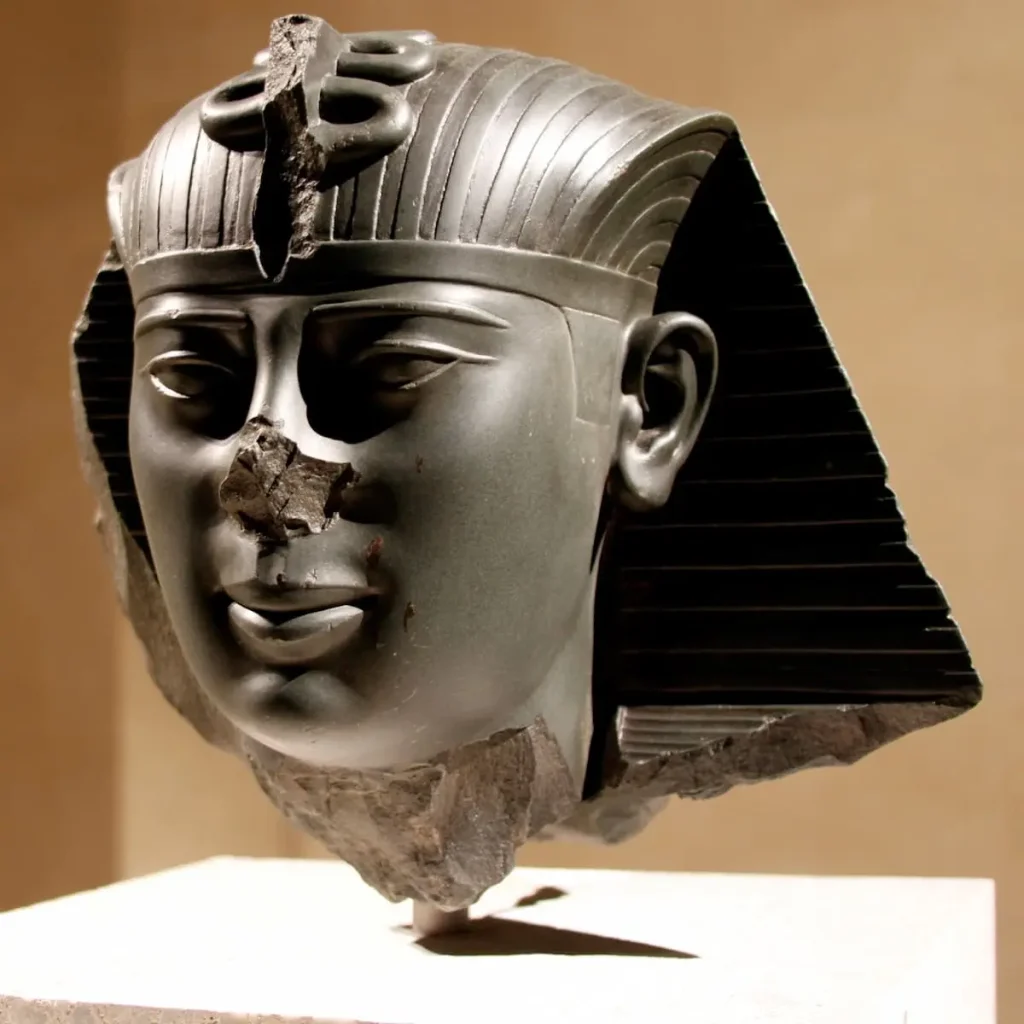
5. Why Was The Temple Built?
The Temple of Amun at Siwa Oasis was erected during the reign of Pharaoh Amasis II with religious and political connotations (26th Dynasty, 6th century BCE). The temple was constructed essentially for the worship of Amun-Ra, the chief god of the Egyptian pantheon, whose worship was the symbol of divine kingship and universal order. The establishment of a temple far away at Siwa Oasis, amidst the harsh Western Desert, thus extended Egypt’s sacred geography into the desert so that the remote Berber tribes would be brought under the spiritual heart of the Egyptian state.
It was also the seat of great oracle powers. The prophecy delivered by the priests through the voice of the god would influence major political decisions. This was a matter of political faith and the legitimacy of the rulers. When Alexander the Great came in 331 BCE, the Oracle pronounced him a son of a god, cementing his authority in Egypt.
On a practical level, the temple helped cement Egyptian control over the trade routes leading across the desert, through Siwa, Libyan Cyrenaica, and down to the Nile Valley, and thus the Temple of Amun was more than a mere temple; it was a uniting symbol of divine kingship and Egyptian power at the desert frontier.
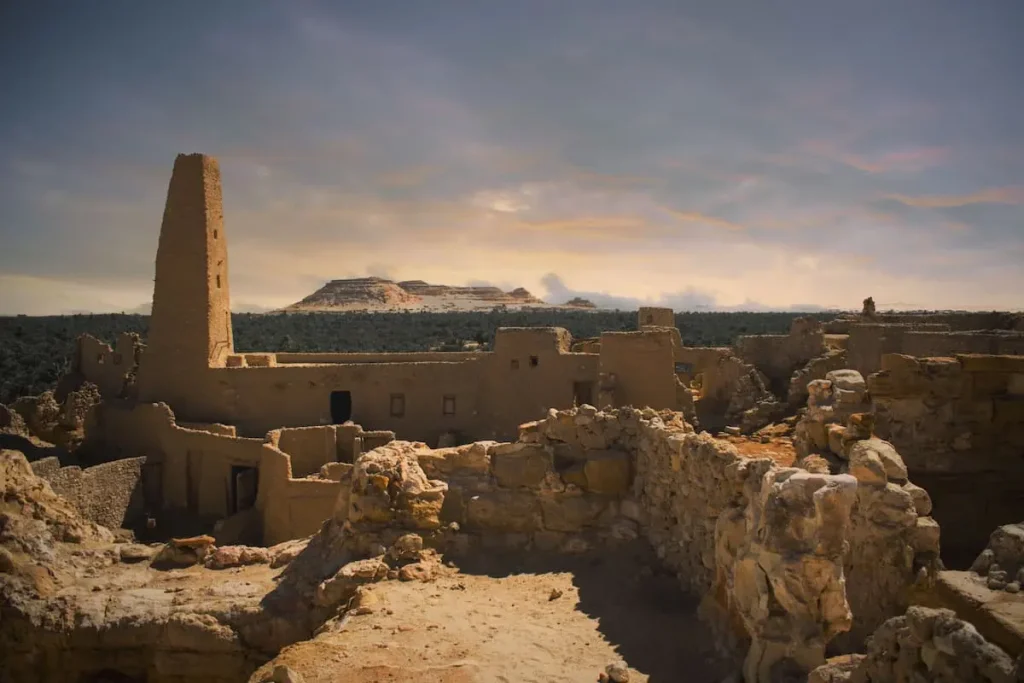
6. Temple of Amun Facts
Considered one of the finest desert memorials in Egypt, the Amun Temple in Siwa, sometimes called the Oracle of Amun, dates back to the 6th century BCE under the reign of Pharaoh Amasis II. When Alexander the Great visited the site in 331 BCE, the oracle famously gave him the birthright of being the son of Amun, hence the divine right to rule Egypt.
An interesting bit about the temple: One could almost say everything about the Temple of Amun was almost perfect. For scenic views of the Siwa Oasis and the surrounding deserts, the temple was built on top of Aghurmi Hill, thus securing it under divine oversight in a spiritual sense while practically affording it with defense. Due to a few earthquakes and erosion that have taken tolls on the structure over the millennia, it presently lies in partial ruin. Traces of its mud-brick and stone walls mark its presence now, hopefully a reminder of what glory it must have had.
Oracular consultation was the main function of this temple. Pilgrims, kings, and generals would sometimes cross dangerous deserts to be guided by the priests of Amun. From this, it was not only a religious center; it also possessed the political power to influence decisions in Egypt and beyond.
This temple curiously displays a mixture of Egyptian and Libyan-Berber architectural traditions, quite appropriate considering Siwa’s rather singular cultural crossroads. The ruins today still stand as an elusive symbol that draws historians, travelers, and seekers.

